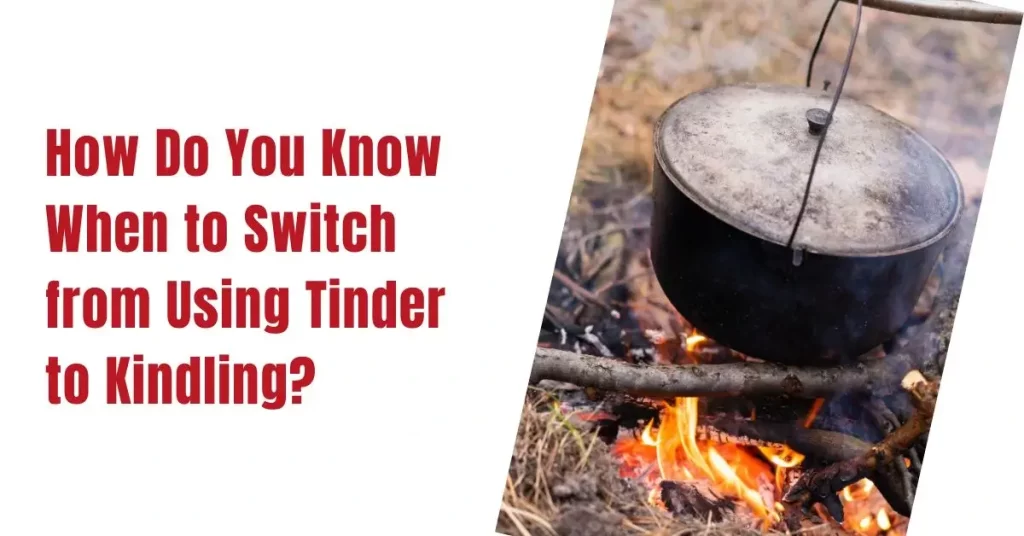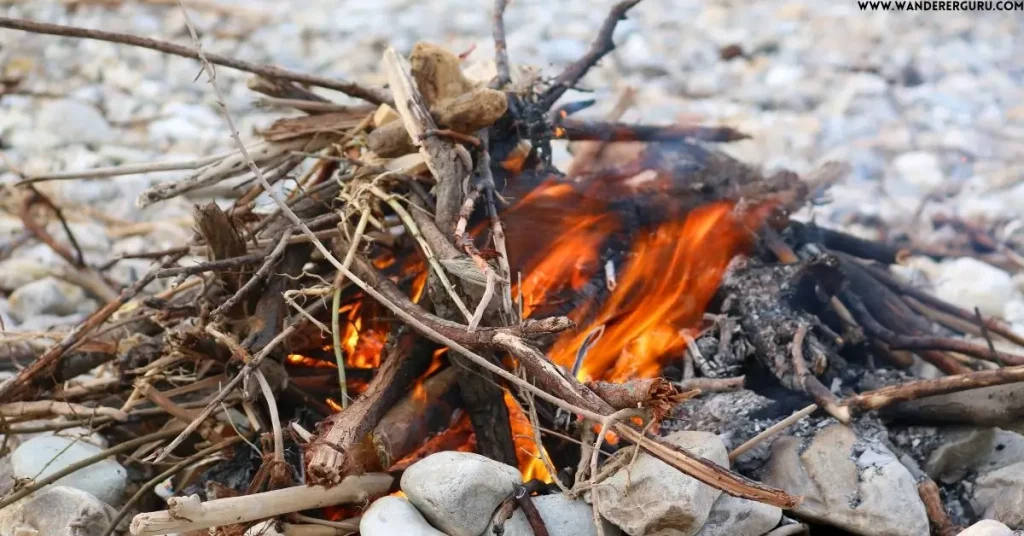The age-old debate of “Tinder vs Kindling” is at the heart of mastering the art of fire building. Whether you’re a seasoned outdoor enthusiast or a novice camper, understanding the nuances of these two essential fire-starting components is paramount for success.
In this comprehensive guide, we will delve into the differences between Tinder and Kindling, their distinct roles in fire ignition, and ultimately, answer the question: Which is better, Tinder or Kindling?
Bonus:
10 BEST FREE AND OVERNIGHT SUMMER CAMPS IN ALASKA, USA
What Comes First: Tinder or Kindling?
Before we delve into the debate of Tinder vs Kindling, let’s clarify the ignition order. In a traditional fire-starting sequence, Tinder comes first, followed by Kindling, and then fuel wood. This sequential approach ensures a gradual buildup of heat and flame, making the transition to a full-fledged fire smoother.
How Do You Know When to Switch from Using Tinder to Kindling?

Knowing when to transition from Tinder to Kindling is crucial to starting a successful fire. Tinder is an incredibly fine and combustible, such as dry leaves, grass, or shavings. It primarily aims to catch a spark or flame and generate initial heat. As the Tinder begins to burn, it’s time to introduce Kindling.
Kindling consists of small, thin twigs, or sticks, typically no thicker than a pencil. When you observe the Tinder burning steadily, carefully arrange the Kindling over the Tinder bed in a pyramid or teepee shape. The Kindling will gradually catch fire from the Tinder, providing a more potent and sustained flame.
The transition should occur when you see a stable flame developing in Tinder and are confident it can ignite the Kindling. Take your time with this process, as insufficient Tinder can lead to kindling not catching fire effectively.
Bonus:
10 BEST PRIVATE CAMPGROUNDS NEW BRUNSWICK CANADA
What Makes Good Tinder and Kindling?
Now that we understand the order and timing let’s discuss what makes good Tinder and Kindling.
Tinder
Dryness: Tinder must be bone dry to ignite quickly. Moisture in Tinder can significantly hinder the fire-starting process.
Fine Texture: Tinder should have a fine texture, allowing it to catch fire easily from a spark or flame.
Flammability: Choose materials with natural flammability, such as dry leaves, grass, or shredded bark.
Kindling
Size: Kindling should be small and thin, with no more than an inch in diameter. This allows for quick ignition and better airflow.
Dryness: Like Tinder, Kindling must be dry to combust effectively.
Graduated Sizes: A variety of kindling sizes, from tiny twigs to slightly thicker sticks, aids in building a stable flame.
Which Is Better: Tinder or Kindling?
The debate over whether Tinder or Kindling is better is akin to asking whether flour is better than water in making dough. In reality, both are indispensable for different stages of the fire-building process.
Tinder is the initial spark-catcher, igniting swiftly and providing the initial heat needed to ignite Kindling. With Tinder, it’s easier to start a fire from scratch.
On the other hand, Kindling sustains and builds upon the initial flame generated by Tinder. It allows you to progress from a tiny spark to a robust fire. For more ideas visit my Pinterest.
In conclusion, both Tinder and Kindling have unique roles in fire starting. Tinder is the ignition source, while Kindling is the sustainer. They make for a reliable and effective fire-starting process when used in tandem.
Conclusion
Understanding the importance of Tinder and kindling in starting a fire is essential for any outdoor enthusiast, camper, or survivalist. While the debate of Tinder vs Kindling might exist, the reality is that both play equally vital roles in the fire-building process. Properly selected and used, Tinder and Kindling can transform a spark into a roaring fire, providing warmth, light, and a means for cooking—a true testament to our mastery over nature. So, next time you’re in the great outdoors, remember to have both Tinder and kindling at your disposal to conquer the elements and enjoy a cozy campfire.
FAQs
Q1: Can I use any dry material like Tinder and Kindling?
While many dry materials can serve as Tinder and Kindling, choosing suitable materials is essential. Tinder should be extremely dry and have a fine texture for quick ignition. Good options include dry leaves, grass, or shredded bark. Kindling should be small, thin sticks and dry, ideally no thicker than a pencil. Natural materials like dry twigs work well for Kindling.
What happens if I don’t use Tinder when starting a fire?
Without Tinder, starting a fire from scratch becomes significantly more challenging. Tinder is crucial in catching the initial spark or flame and providing the necessary heat to ignite Kindling. Trying to start a fire without Tinder may result in prolonged and frustrating attempts to get a flame going.
Q2: How can I ensure my fire-starting materials remain dry in wet conditions?
Keeping your fire-starting materials dry in wet conditions is essential. You can use waterproof containers or bags to store Tinder and Kindling. Additionally, collecting dry materials from the inner layers of trees or bushes can help, as they are less likely to be exposed to rain or moisture. It’s also a good practice to gather and prepare your materials before starting a fire to ensure they are as dry as possible.
Q3: Can I skip using Kindling and start a fire with just Tinder?
While igniting a fire with just Tinder is possible, Kindling is highly recommended. Kindling sustains and builds upon the initial flame generated by Tinder, making it easier to transition to larger fuel wood. Skipping Kindling can make the fire-starting process more challenging and less efficient.
Bonus:

